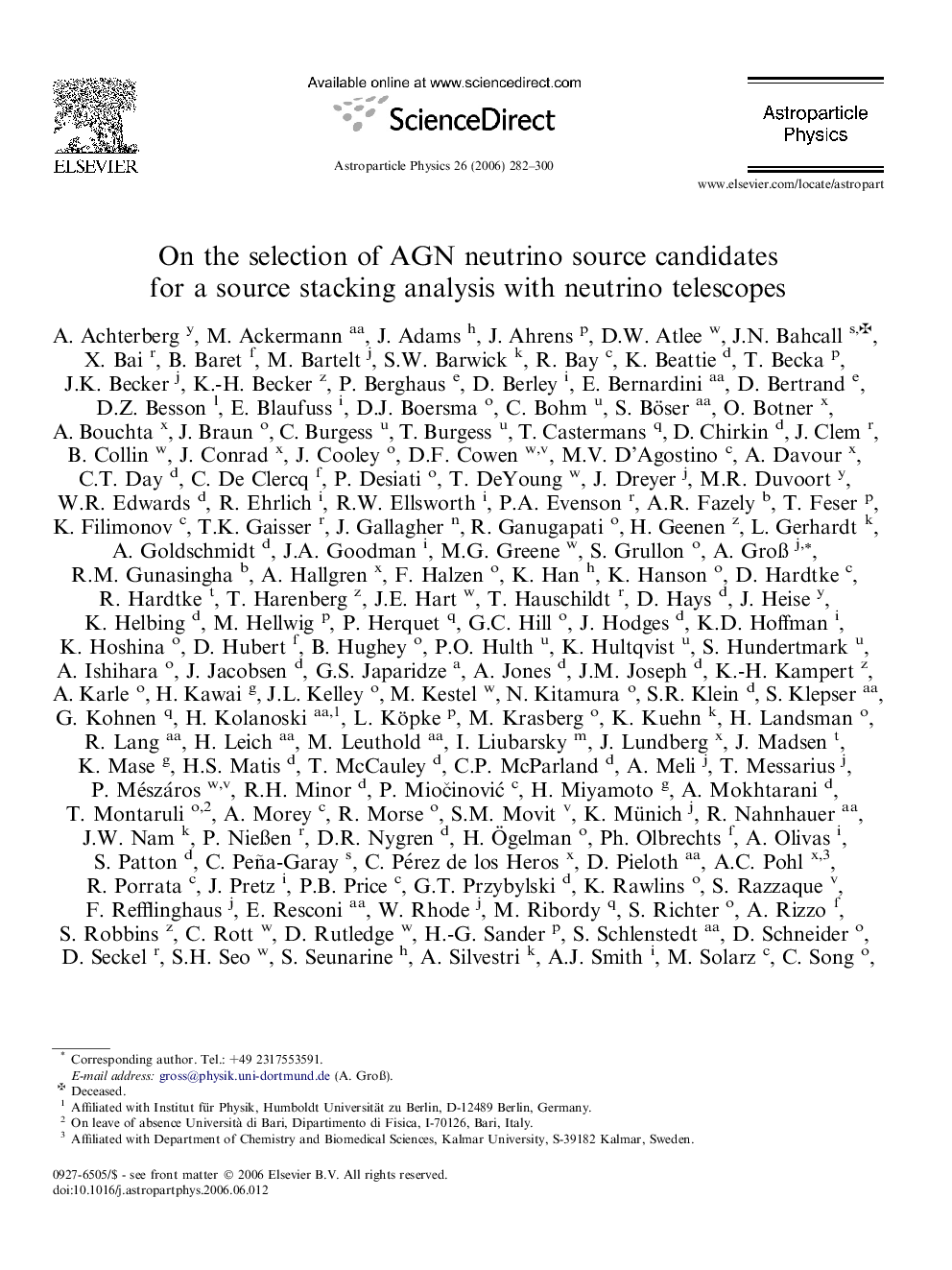| Article ID | Journal | Published Year | Pages | File Type |
|---|---|---|---|---|
| 1771553 | Astroparticle Physics | 2006 | 19 Pages |
The sensitivity of a search for sources of TeV neutrinos can be improved by grouping potential sources together into generic classes in a procedure that is known as source stacking. In this paper, we define catalogs of Active Galactic Nuclei (AGN) and use them to perform a source stacking analysis. The grouping of AGN into classes is done in two steps: first, AGN classes are defined, then, sources to be stacked are selected assuming that a potential neutrino flux is linearly correlated with the photon luminosity in a certain energy band (radio, IR, optical, keV, GeV, TeV). Lacking any secure detailed knowledge on neutrino production in AGN, this correlation is motivated by hadronic AGN models, as briefly reviewed in this paper.The source stacking search for neutrinos from generic AGN classes is illustrated using the data collected by the AMANDA-II high-energy neutrino detector during the year 2000. No significant excess for any of the suggested groups was found.
